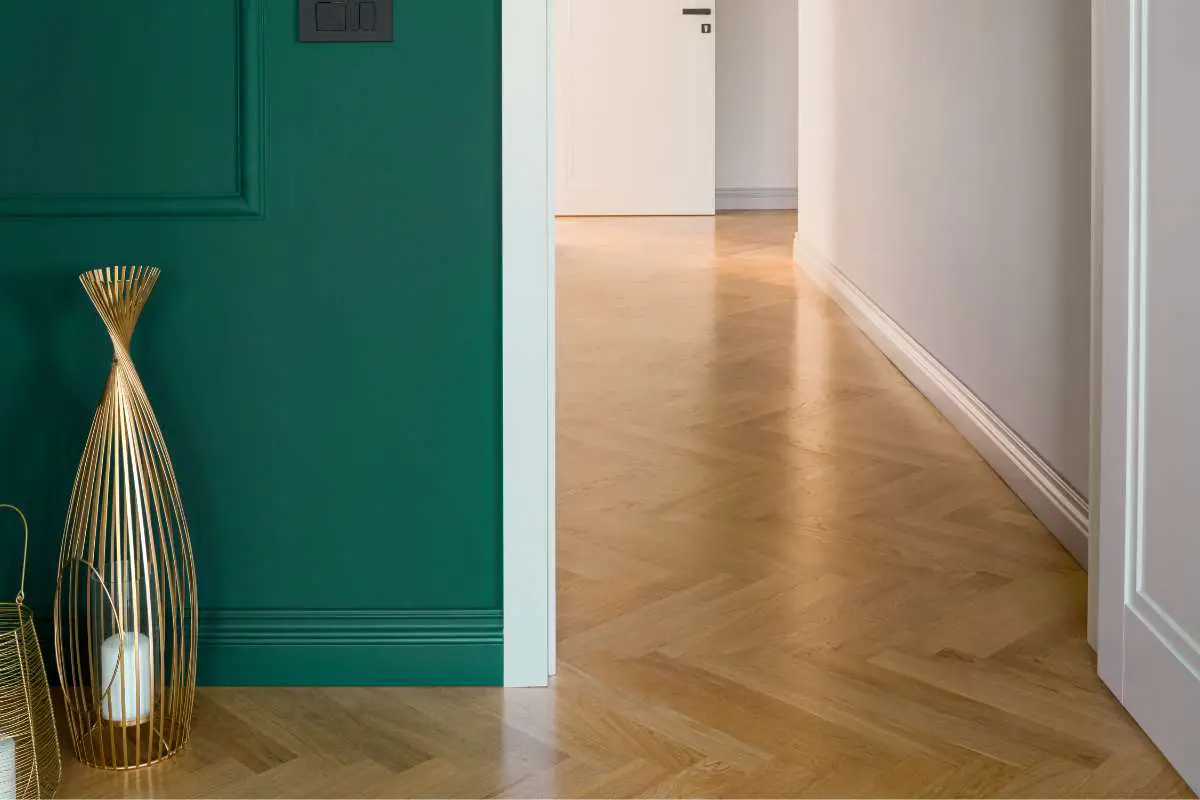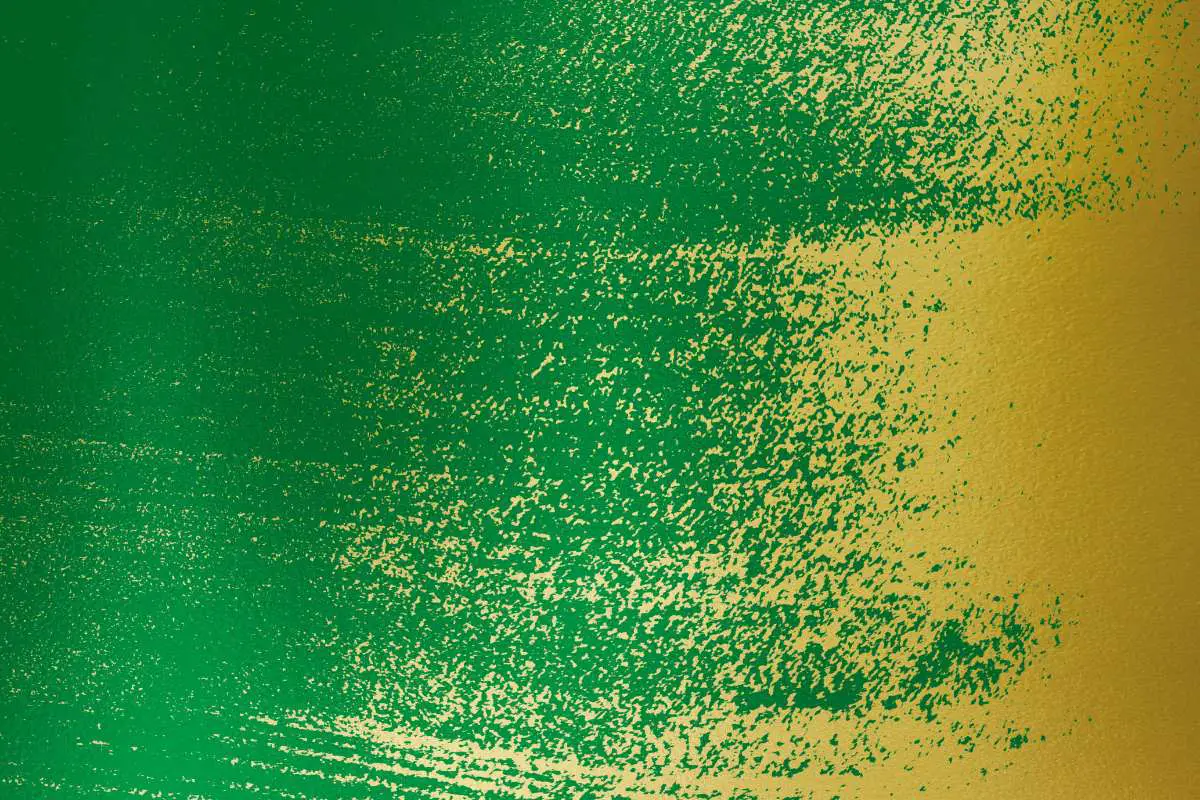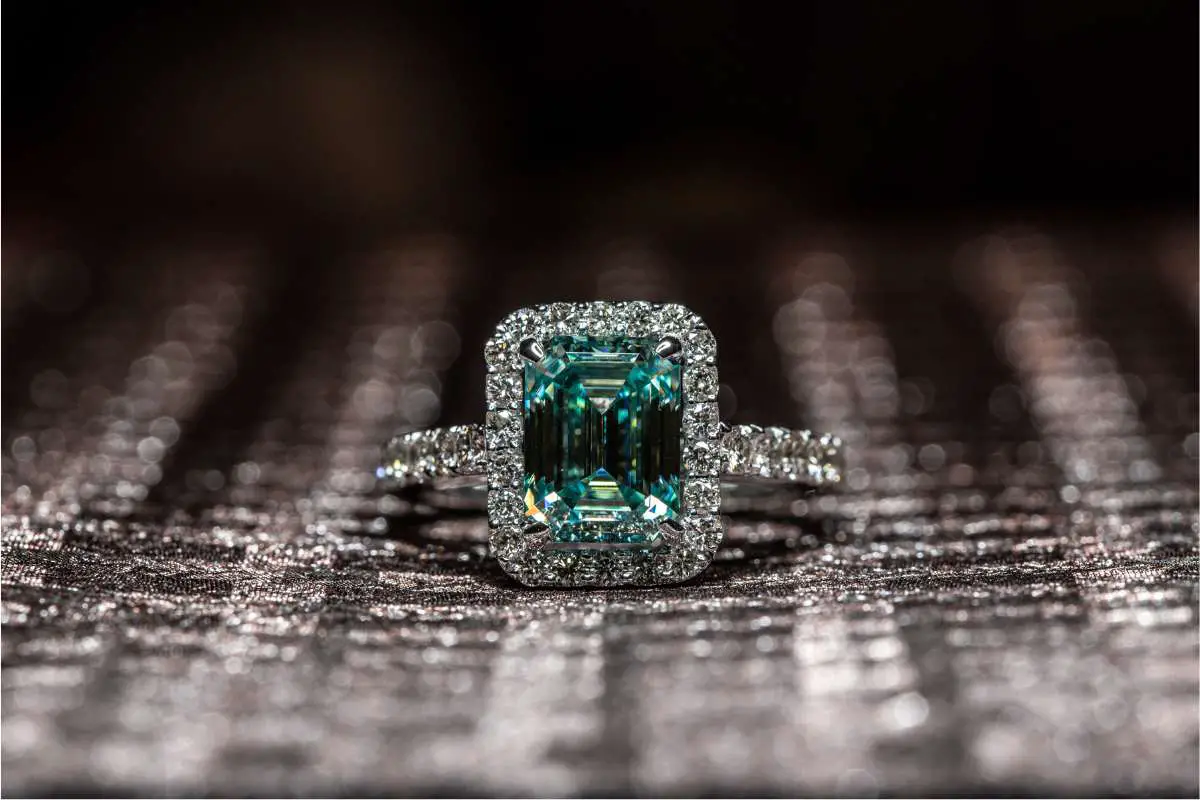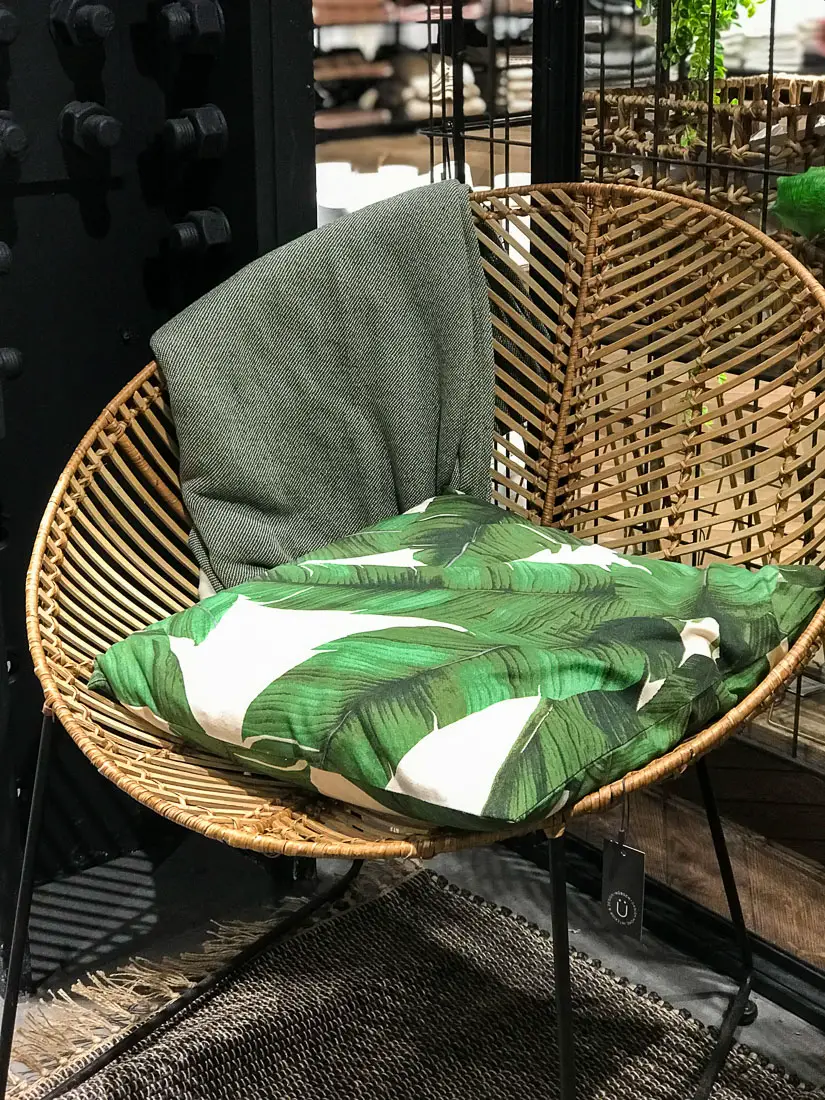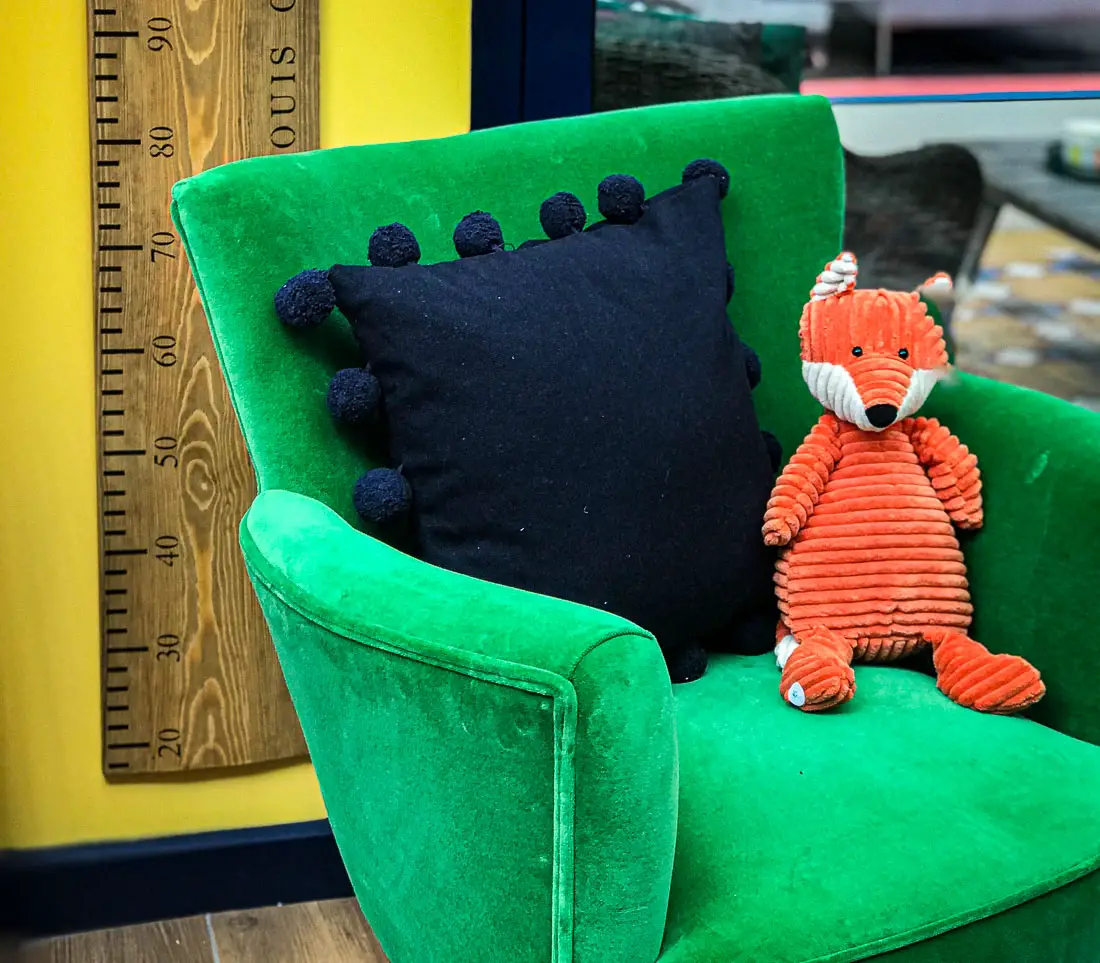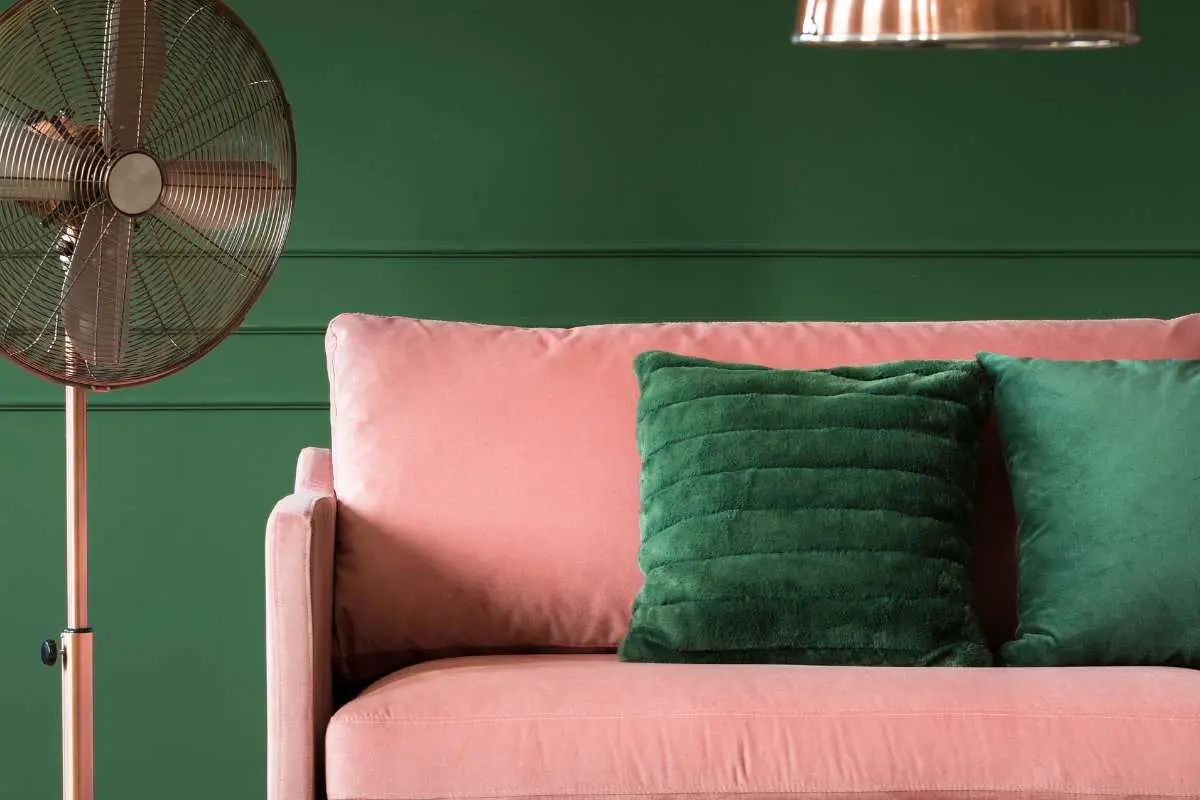Emerald green, with its rich and regal allure, is a captivating hue that immediately brings to mind lush landscapes and precious gemstones. Synonymous with luxury and elegance, Emerald green was used widely by artists in the 19th century. But when it comes to creating a harmonious and visually striking color palette, many find themselves wondering: What colors go well with emerald green? Here are the secrets of pairing this elegant shade to create modern combinations that will leave a lasting impression.
What Color is Emerald Green?
Emerald green was first used at the end of the 1500s and reached peak popularity in the 1800s with a number of great artists favoring its vibrant hue.
Emerald green is a darker hue of green, using a little more blue to enrich the color. The balance is around 40% yellow pigment (close to mustard) and 60% blue (deep Prussian blue).
It is brighter than teal, olive or sage green but stays clear of bright shades like neon or lime green. Its closest resemblance in nature, other than its namesake gem, is rolling green grassy hills, hummingbird feathers, and tropical leaves.
Emerald Green Pantone
In 2013 emerald green was voted Pantone’s color of the year and has remained extremely popular in art and design. The Pantone color reference code is PANTONE 17-5641 TPX Emerald.
Monochromatic colors are different shades of the same color ranging from darker to lighter shades. You get shades of emerald green by adding black to a color. A monochromatic color scheme emerald green can get as dark as deep blackish green.
Other useful elements of color theory that you can try include analogous colors, complementary colors, split complementary colors and triad colors.
Analagous Colors for Emerald Green
Analogous colors are near other on the color wheel and provide a visually soothing color scheme.
For emerald green, which is a shade of green, the analogous colors would be those within the green family and the neighboring hues.
The analogous colors for emerald green could include:
- Teal is a bluish-green color that is closely related to emerald green. It’s a bit cooler in tone but maintains a similar vibrancy.
- Lime Green is also analogous to emerald green. This bright, yellowish-green shade is a lighter and more vibrant variation of green.
- Turquoise falls between blue and green. It shares some characteristics with emerald green while introducing a hint of blue.
Using analogous colors in a design or composition can create a sense of harmony and cohesion, as they share common undertones and evoke a similar mood.
Complementary Colors for Emerald Green
Complementary colors go together because they are on the opposite each other on the color wheel. A complementary color scheme has a high contrast and catches a viewer’s attention.
Since emerald green is a shade of green, its complementary color is a shade of red. A rich, vibrant red would be the complementary color to emerald green. When placed together, complementary colors create a strong contrast and can make each other appear more vibrant and intense.
Split Complementary Colors for Emerald Green
Split complementary colors are the two colors on the opposite side of the complementary color (i.e., the one right across from emerald green on the color wheel).
The split complementary colors for emerald green are red-orange and red-violet. These colors create a balanced and visually pleasing palette that combines the boldness of complementary colors with the harmony of neighboring hues. The use of contrasting colors makes an emerald green color palette pop.
Triadic palette for Emerald Green
A triadic palette are three colors evenly spaced out on the color scheme. In the case of emerald green, a triadic palette is created as follows:
- Purple/Violet is opposite green on the color wheel, making it one of the triadic colors. A rich, deep violet or purple can create a striking contrast with emerald green.
- Positioned opposite blue-green (which includes emerald green) on the color wheel, orange is another triadic color. A warm and vibrant orange can add a bold and lively element to the palette.
- Yellow completes the triadic palette for emerald green. This color is opposite blue, which is part of the green family. A sunny yellow can provide a cheerful and energetic contrast to emerald green.
Tints and Tones of Emerald Green
You get tints of emerald green by adding white to the color and tones of emerald green by adding grey to the color.
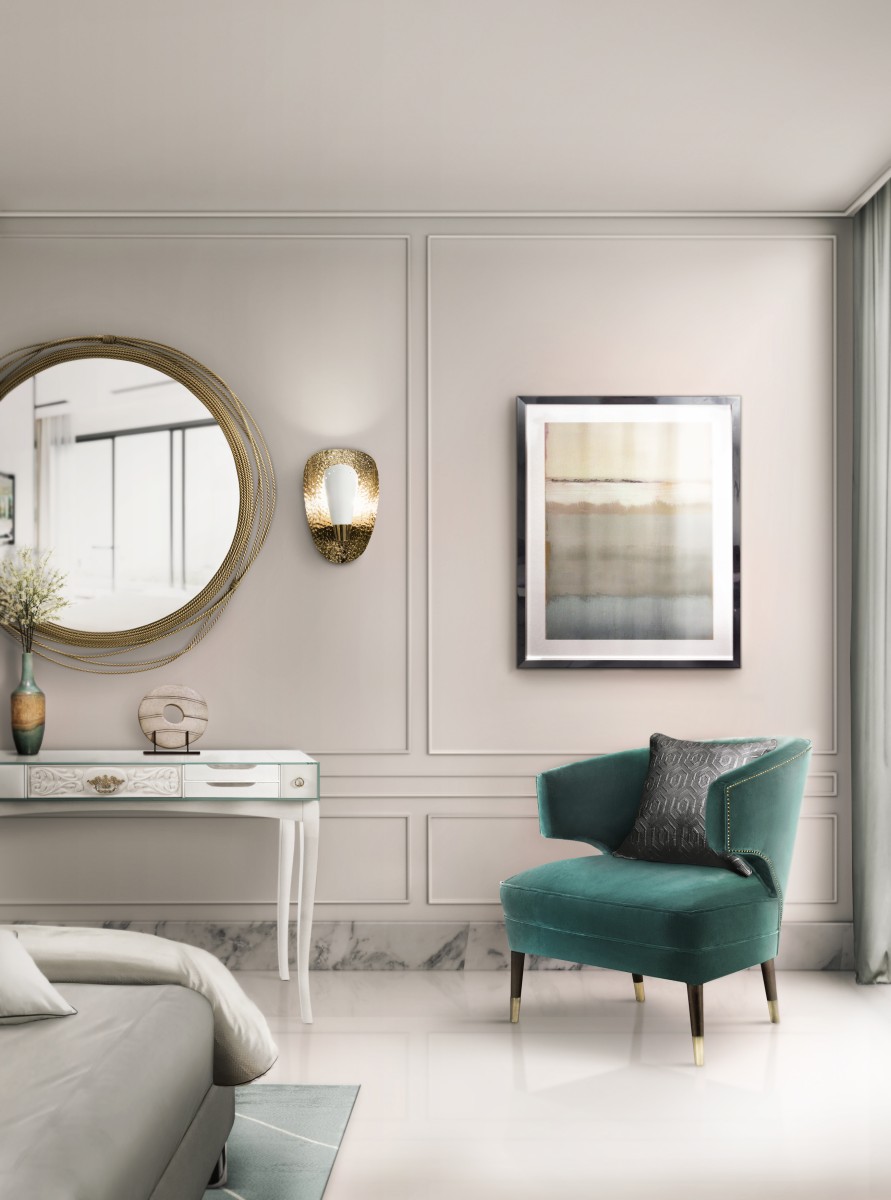
A pop of emerald green in this peaceful bedroom design with a statement velvet chair named IBI from Covet House.
10 Perfect Color Combinations for the Color Emerald Green
emerald green is a versatile hue that harmonizes beautifully with a wide range of colors. Whether you’re aiming for a timeless look, a luxurious ambiance, or a playful combination, emerald green will allow for many creative possibilities.
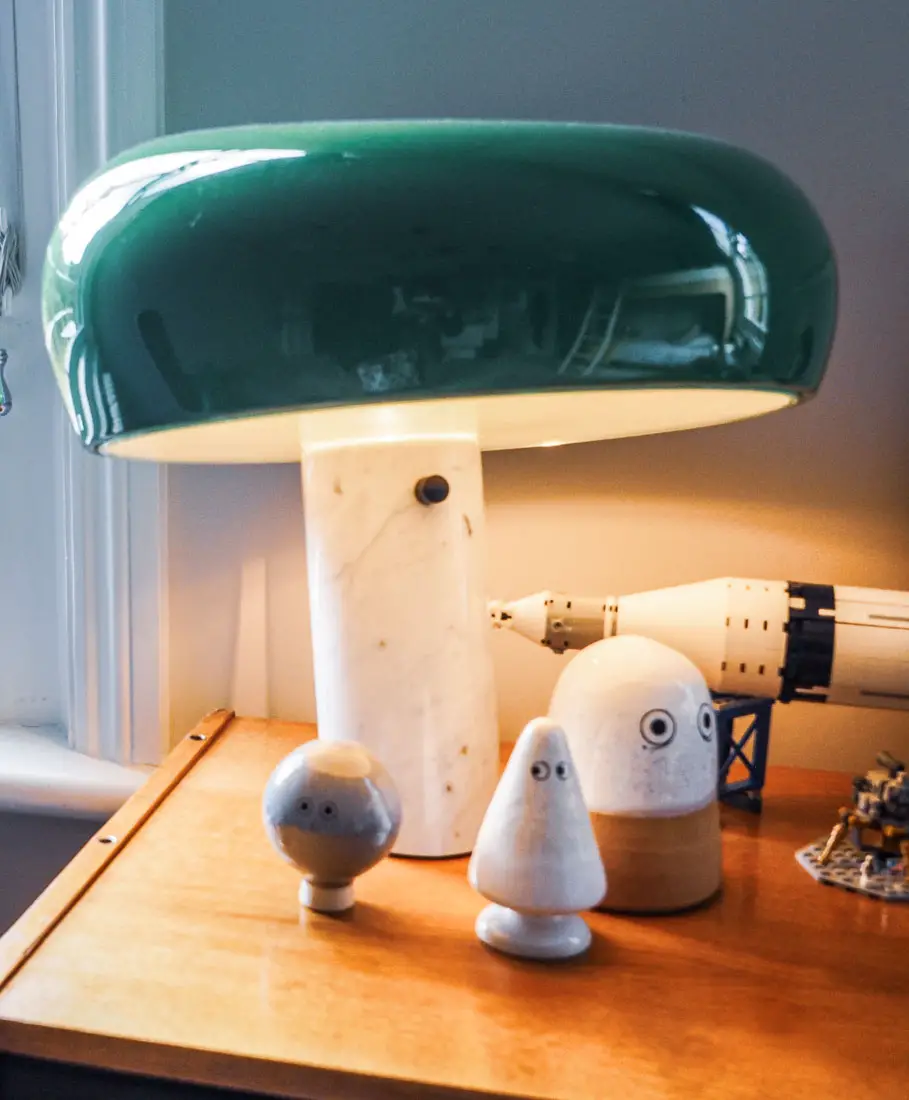
A Snoopy lamp in emerald green adds designer whimsy to a kids’ bedroom
Emerald Green and White
One of the most timeless and classic combinations is emerald green with pure, crisp white. The vibrant green is beautifully complemented by the clean and serene nature of white. Whether you’re planning a wedding, a room makeover, or even a fashion ensemble, this pairing exudes sophistication and refinement.
Spaces flooded by light and decked out in crisp white linens are begging for the addition of emerald green. This is often done with plants and that very current theme of urban jungle. An abundance of tropical foliage in a room breathes life into a space like nothing else.
Emerald Green and Black
Few color combinations communicate elegance quite like emerald green and black.
They are often seen together in formal wear with textiles like lace and satin. In design, they pair effortlessly in marble or as accent colors to a bright space. They serve drama, mystery, and sophistication in abundance and have become a timeless classic.
Emerald Green and Gold
For an opulent and luxurious vibe, consider pairing emerald green with gleaming gold accents. The warmth of gold perfectly offsets the coolness of emerald green, creating a dynamic and visually stunning contrast. Incorporate gold in details like frames, accessories, or even furniture accents for a touch of glamour.
Gold is one of the most popular colors that go with emerald green and often used together in fashion. In design, it is elegant and refined, and the combination of rich textiles like emerald satins or velvets along with gold metallic pieces can lend a sense of opulence.
Yellows and golds are next to greens on the color wheel making them analogous colors. They go together in a natural and pleasing way creating a harmonious ambiance.
Emerald Green and Rose Gold
Rose gold has struck the perfect balance between gold and silver; being more playful than gold and warmer than silver. Rose gold can also easily replace gold if you are looking to get away from the rigidity that gold expresses. This has become a popular fixture at weddings and a trendy jewelery alternative.
Emerald Green and Silver
This is another exceedingly elegant combination. Silver is equally as elegant as gold but brings out the colder hues of emerald. It elevates the blue undertones and is often paired together in jewelry and eveningwear.
Emerald Green and Earthy Browns
Drawing inspiration from nature, combining emerald green with earthy browns creates a harmonious and grounded palette. Picture emerald green foliage against the backdrop of rich soil and bark. This combination brings a sense of comfort and connection to the natural world into any space.
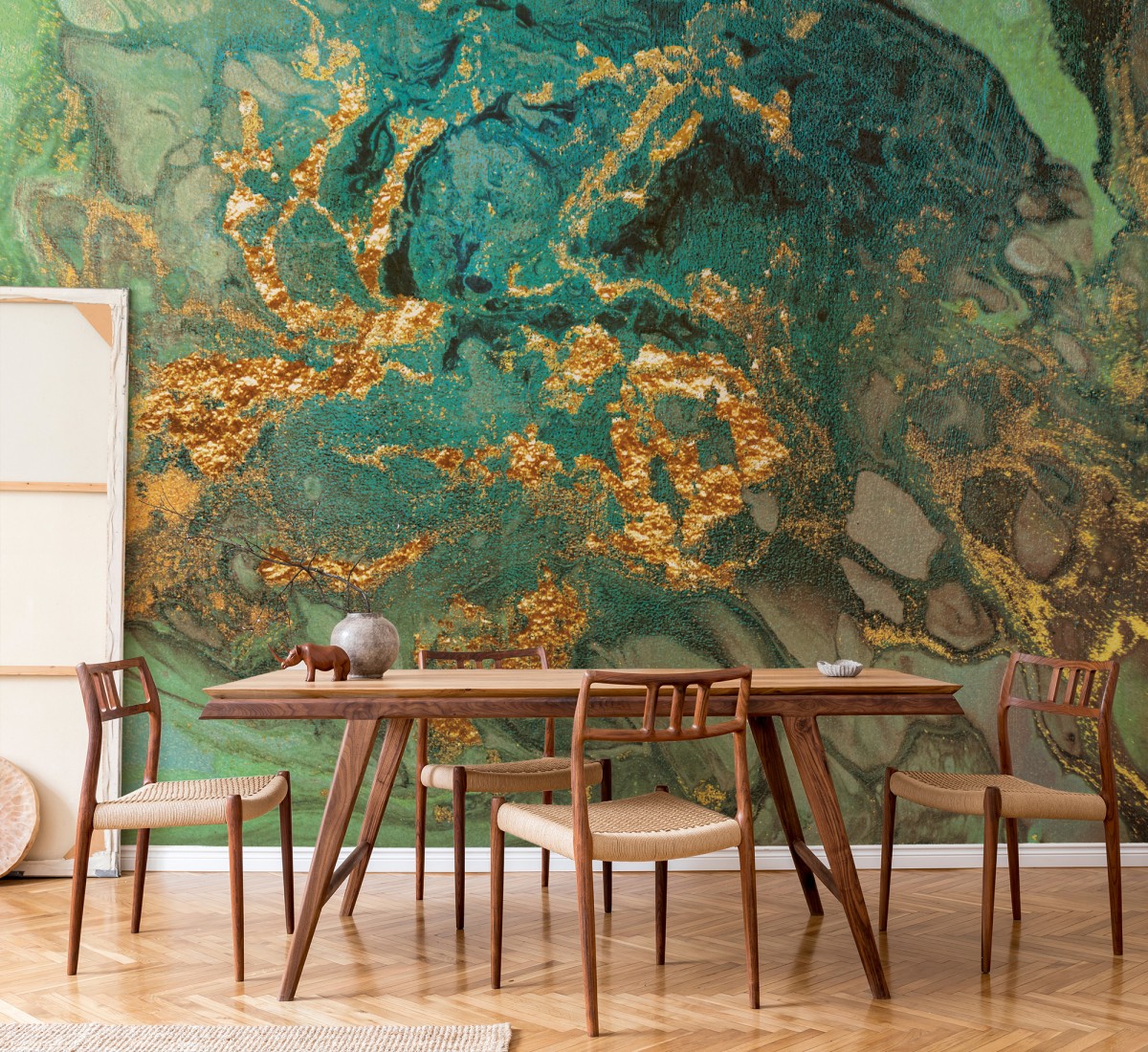
Contrast the luxurious emerald marble and the geometric clean of modern wood furniture (Emerald Marble Mural by Lara Skinner at Wallsauce.com)
Emerald Green and Beige
At its core, green is one of the most abundant colors on earth and it is brought into spaces to mimic the natural environment. Whether it be with plants, wallpapers, textiles, or paint, green is restorative and life-giving.
Emerald green goes perfectly with shades of beige, usually through wood or woven elements. Together they are harmonious and stay true to the natural atmosphere you are trying to create.
Emerald Green and Deep Blue
For a pairing that resonates with the depths of the sea, consider blending emerald green with deep, luxurious blue. This combination creates a sense of mystery and tranquility, evoking images of lush underwater landscapes. It’s a striking duo that can be used in various settings, from interior design to fashion choices.
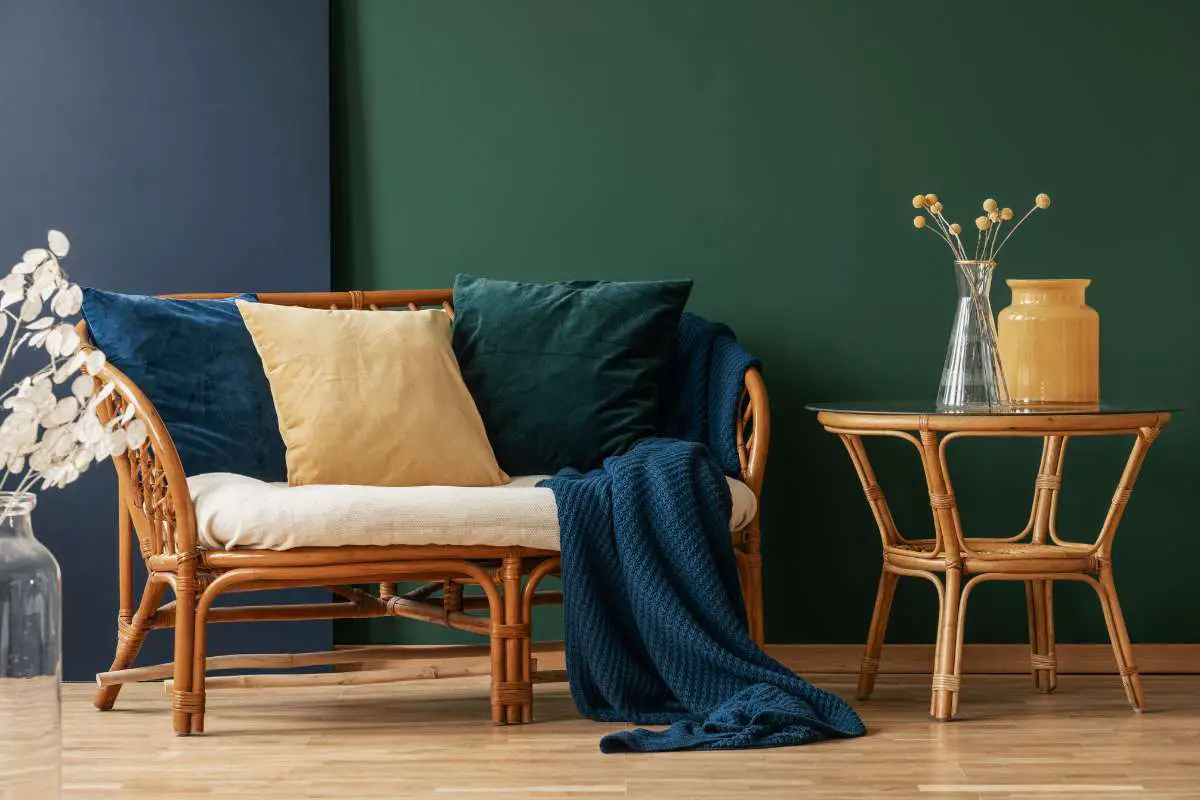
Emerald green and blue liven up an otherwise sedate room with brown rattan furniture.
Emerald Green and Citrusy Orange
If you’re seeking a more vibrant and energetic palette, team emerald green with zesty citrusy orange. The contrast between these two bold hues is exhilarating and invigorating. This combination works well for adding a pop of color to your outfits or injecting life into interior spaces.
Emerald Green and Pink
For a contemporary and romantic twist, pair emerald green with soft blush pink. This juxtaposition of bold and delicate hues creates an enchanting and captivating atmosphere. Whether you’re planning a wedding or designing a bedroom, this combination brings a sense of modern elegance.
Emerald green is directly opposite candy apple on the color wheel, its complimentary shade. But in recent years there has been a surge in the popularity of emerald green and ballet pink in the design world.
Pink brings playfulness into a space and together they convey a tropical feeling, steering away from emerald’s rigid regal background. A light blush or guava pink is congruent while hot pink and emerald green is a highly saturated combination that should be used sparingly.
How Will You Use Emerald Green?
So the next time you find yourself pondering what colors go well with emerald green, remember that the possibilities are as vast as your imagination. Experiment, explore, and let your creativity guide you toward crafting stunning and memorable color combinations that speak to your unique style and personality.
Like the look of the color emerald green? Spread the Word! Pin this to your Pinterest Boards for future reference!
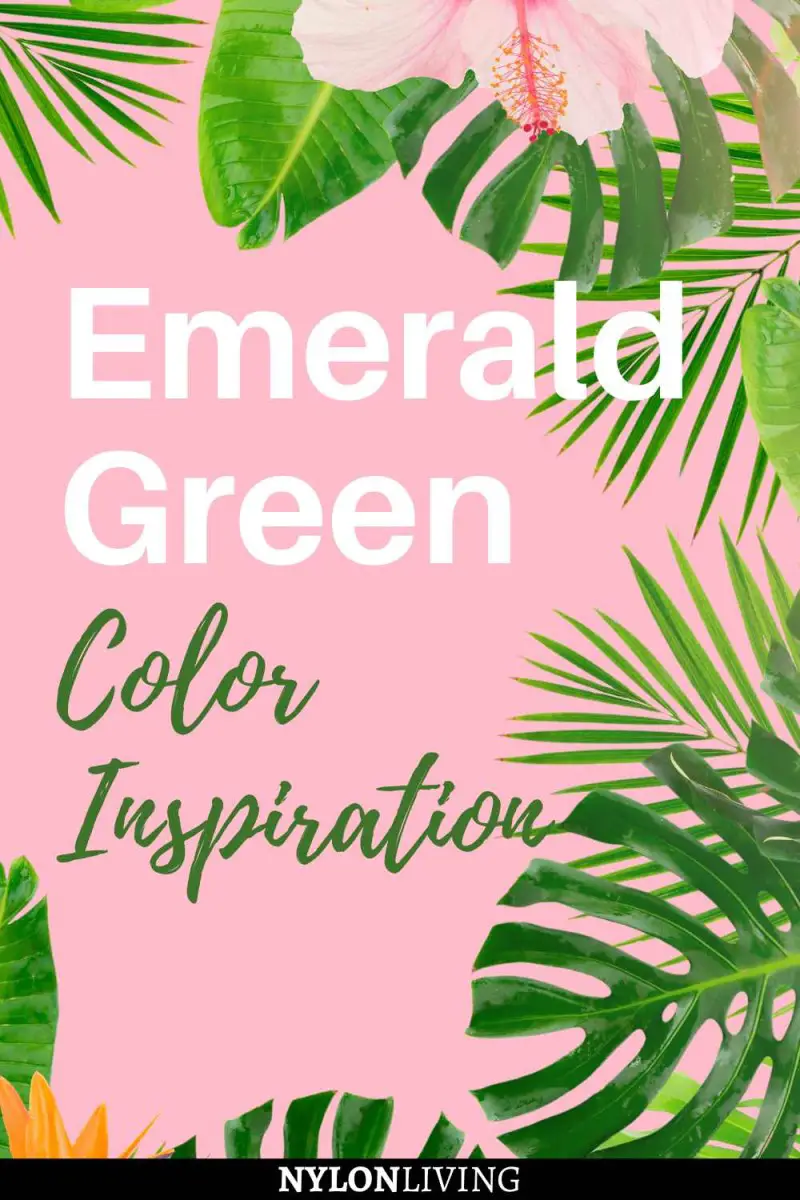
Discover the ultimate color matches for emerald green! From classic emerald green and white to the playful emerald green and pink, or even the calming emerald green and blue, this guide reveals the top color combinations you’ll love. Find inspiration for your next project and bring out the best in emerald green. Don’t miss out! Pin now and create a captivating color palette. 🌿💚
We did not receive compensation of any form, monetary or otherwise, from any of the products, services, hotels. etc mentioned in this article.
This site generates income via partnerships with carefully-curated travel and lifestyle brands and/or purchases made through links to them.


